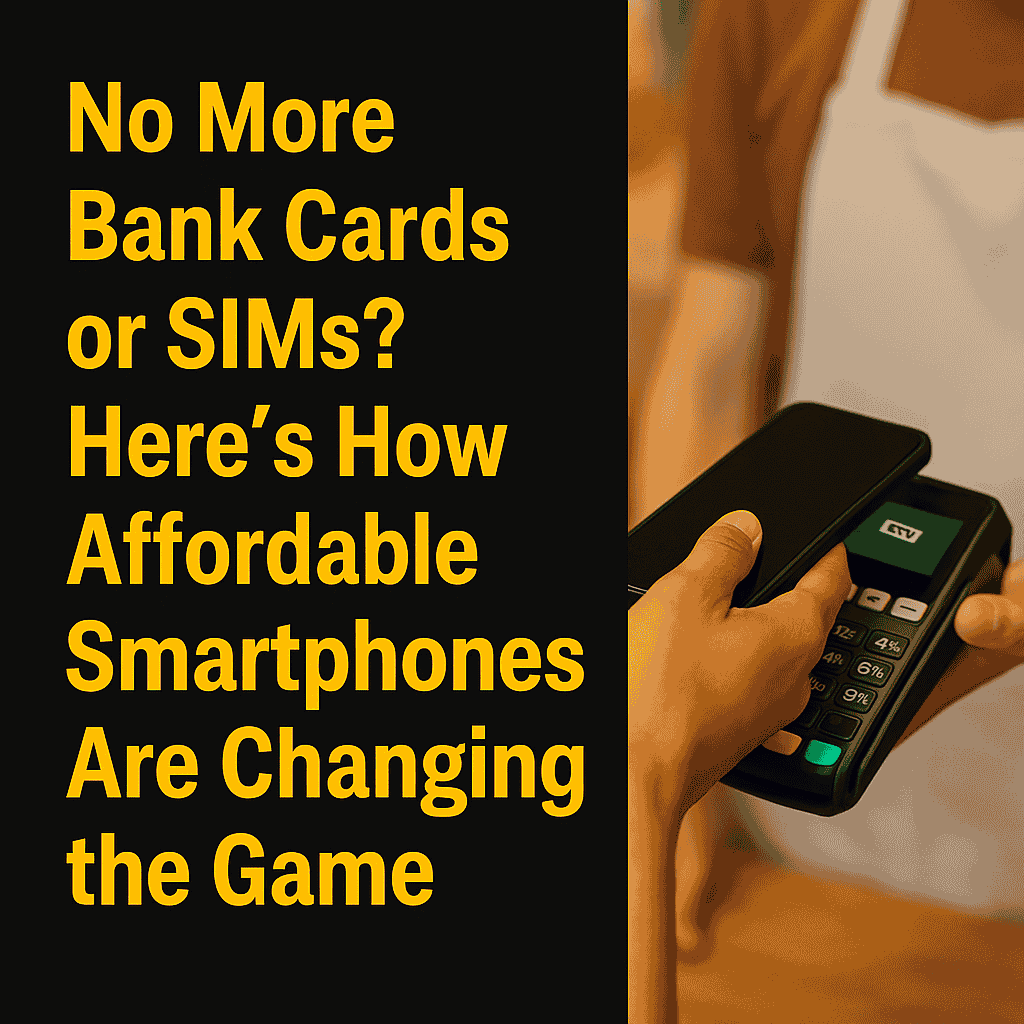It’s time to put away those old bank cards and plastic SIMs — the future is here, and it fits right in your pocket. With affordable smartphones now offering tap-to-pay and eSIM support, paying for your morning coffee or switching between mobile networks has never been easier.

The Rise of Tap-to-Pay Payments
Long gone are the days when swiping or inserting your bank card was the only way to pay. With NFC (Near Field Communication) built into many mid-range and even budget smartphones, tap-to-pay is now a reality for more people.
Major banks have been encouraging this shift for years, and for good reason. Tap-to-pay is not only faster but also more secure. Since your card never leaves your hand, it’s harder for scammers to clone or steal your details.
And with digital wallet apps like Apple Wallet, Google Wallet, Samsung Wallet, or Garmin Pay, you can store your bank cards digitally and pay directly from your phone.
Why Digital Wallets Are Safer
Unlike physical cards, your phone needs biometric authentication — your fingerprint, face scan, or a PIN — before any payment can go through. Even if your phone is stolen, no one can buy a thing without your security credentials.
Plus, all communication between your phone and the payment terminal is encrypted, making it harder for hackers to intercept your payment details.
eSIM – A New Way to Connect
The eSIM (embedded SIM) is changing the way we connect to mobile networks. No more fiddling with tiny SIM cards or waiting in line to get one. With eSIM, you can sign up for a new package by simply scanning a QR code.
The best part? You can store multiple eSIM profiles on your device and switch between them anytime. This means you can choose the best network for calls, SMS, or data without physically changing anything.
Affordable Options Are Finally Here
Just a few years ago, only high-end smartphones had these features. Now, you can find them for under R6,000.
Some examples include:
- Samsung Galaxy A36 – Tap-to-pay and eSIM support from just R5,900.
- iPhone SE 2022 – Apple’s affordable eSIM-enabled option at around R5,999.
It’s important to check the specs before buying, as some devices have region-specific limitations. For example, a certain phone model might have NFC in one country but not in another.
Why This Matters
The shift to digital payments and eSIMs is more than just convenience — it’s about security, speed, and flexibility. You can leave your wallet at home, make secure payments, and switch mobile networks without a hassle.
Conclusion
Technology is moving fast, and affordable smartphones with tap-to-pay and eSIM are here to make life easier. Whether it’s paying for groceries or hopping between mobile networks, these features bring a new level of freedom and security to everyday life.
FAQs
1. Do all smartphones support tap-to-pay?
No, only phones with NFC support can use tap-to-pay. Check your phone’s specifications before trying to use it.
2. Is tap-to-pay safe?
Yes, it’s safer than swiping a card. Payments require biometric or PIN authentication, and your card details are encrypted.
3. Can I use eSIM and a physical SIM together?
Yes, many phones support dual SIM setups with one eSIM and one physical SIM.
4. How do I activate eSIM?
Your network provider will give you a QR code or activation voucher to scan in your phone’s settings.
5. Will eSIM work if I travel?
Yes, you can store multiple eSIMs and switch to a local network while traveling — as long as your phone supports it.
Also Read: With iOS 26 Call Screening, Say Goodbye to Spam Calls

